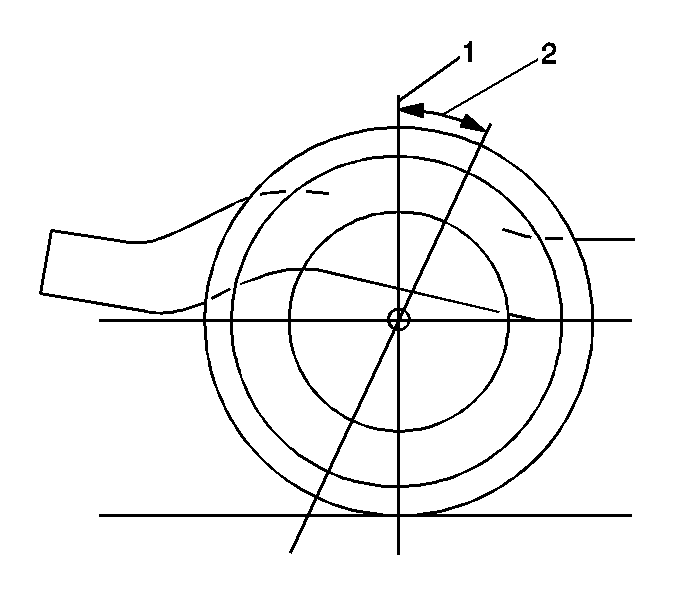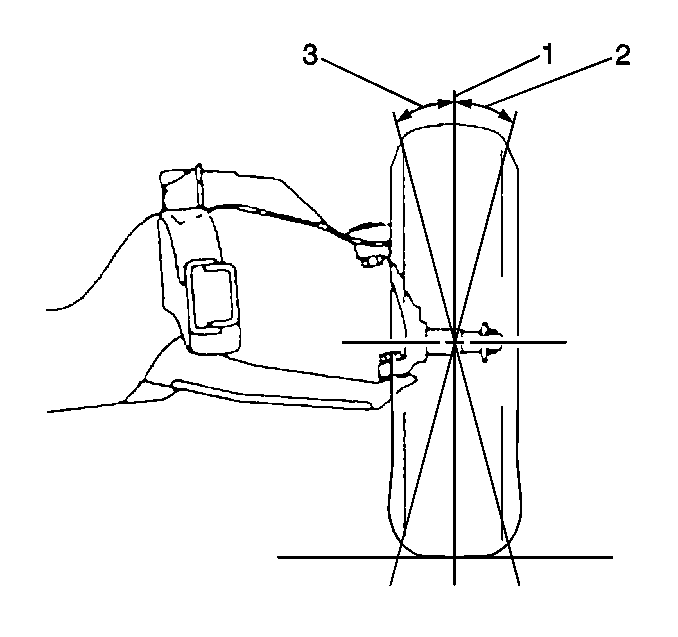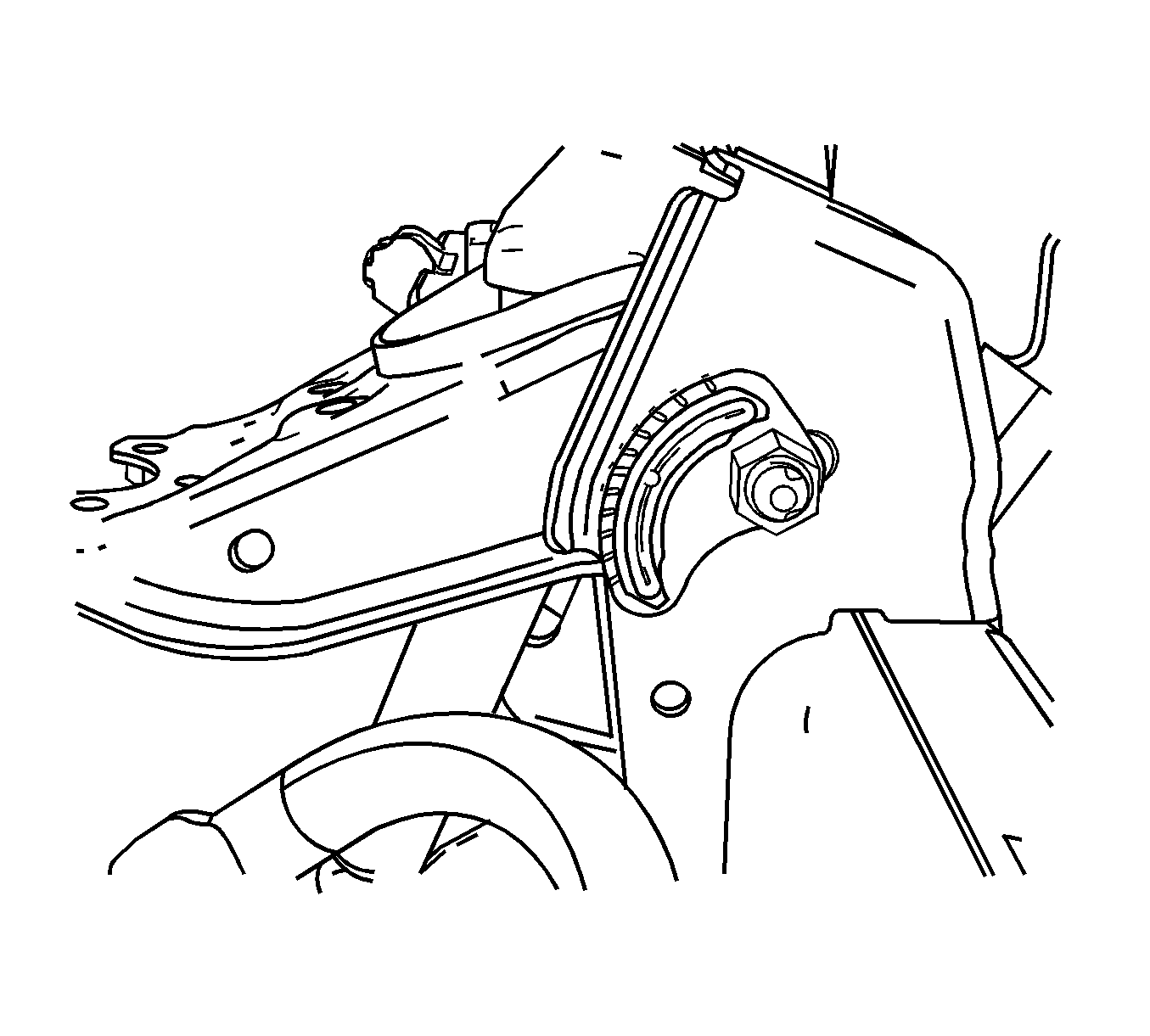For 1990-2009 cars only
Tools Required
J 45938 Alignment Socket
- The caster and camber adjustments are made by rotating the offset cam bolt and the cam in the slotted frame bracket in order to reposition the control arm.
- For an accurate reading, do not push or pull on the tires during the alignment process.
- Determine the caster angle (2). Be sure to compensate for frame angle where required.
- Determine the positive camber (2) or negative camber (3) angle.
- Adjust at the upper control arm.
- Remove the pinned adjusting cam insert. Do not reinstall the cam insert.
- Loosen the control arm cam adjustment bolts.
- Using the J 45938 adjust the caster and the camber angle by turning the cam bolts until the specifications have been met.
- Verify that the caster and the camber are still within specifications. Refer to Wheel Alignment Specifications .
Important: Before adjusting the caster and camber angles, jounce the front bumper 3 times to allow the vehicle to return to normal height.
Measure and adjust the caster and the camber with the vehicle at curb height. The front suspension Z dimension is indicated in Trim Heights. Refer to Trim Height Specifications .


Notice: Refer to Fastener Notice in the Preface section.
When the adjustments are complete, hold the cam bolt in order to ensure the cam bolt position does not change while tightening the nut.
Tighten
Tighten the cam nuts to 155 N·m (114 lb ft).
When the caster and camber are within specifications, adjust the toe. Refer to Front Toe Adjustment .
